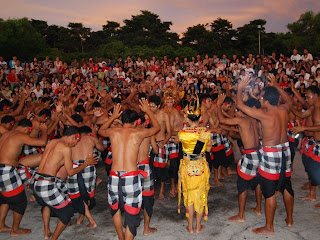
 Jepara, is one of the districts in the province of Central Java. Its capital is Jepara. District borders directly with the Java Sea in the west and north, County Pati and Kudus District in the east, and south of Demak regency. Jepara Regency Karimun Jawa is also included, which is located in the Java Sea.
Jepara, is one of the districts in the province of Central Java. Its capital is Jepara. District borders directly with the Java Sea in the west and north, County Pati and Kudus District in the east, and south of Demak regency. Jepara Regency Karimun Jawa is also included, which is located in the Java Sea. Jepara known as the carving city, because there are craft center known for wood carving up the country. Furniture and sculpture are scattered evenly in almost all districts with their respective expertise. But the trade centers in the region glued Ngabul, Senenan, Annual, Pekeng, Kalongan and Youth. In addition, Jepara is the hometown Indonesian hero RA Kartini.

 Furniture and Handicraft Industry is an industry become a mainstay of Jepara regency. The industry has become the economic backbone of Jepara residents. otherwise, the current interest is cultural tourism and the tourism industry. and carved furniture industry based jepara HOME INDUSTRY and are craft can also be developed into tourism industry as well as handicraft products shopping jepara.
Furniture and Handicraft Industry is an industry become a mainstay of Jepara regency. The industry has become the economic backbone of Jepara residents. otherwise, the current interest is cultural tourism and the tourism industry. and carved furniture industry based jepara HOME INDUSTRY and are craft can also be developed into tourism industry as well as handicraft products shopping jepara. 
LEGEND
Told that there is an expert on sculpture and painting named Prabangkara who lived during King Brawijaya of Majapahit Kingdom. At a time when the king commissioned to create paintings Prabangkara king consort as an expression of his love for the Empress is very beautiful and fascinating.
Painting naked empress could be resolved by Prabangkara perfectly and of course this makes King Brawijaya became suspicious because of the particular body part is confidential, the natural signs / special there are also the paintings and the place / position and shape exactly. By a ruse, Prabangkara with all equipment removed by way tied to a kite up in the sky after the rope is disconnected.
In this floating Prabangkara chisel fell in a village known as the Rear Mountain near the town of Jepara.
In a small village north of Jepara town until now there are many craftsmen carve high quality. But the origins of the carvings here if it was true because Prabangkara fall chisel, there is no historical data to support it.

























.jpg)